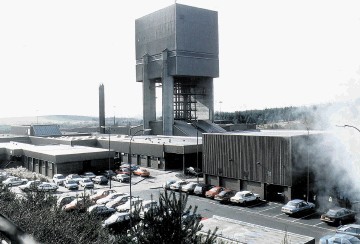
LONGANNET is dead. Long live carbon capture and storage. The two statements are by no means incompatible, as some of the obituary notices for the ScottishPower project in Fife have suggested.
The impasse which persuaded ScottishPower’s owners, Iberdrola, to pull the plug on the Longannet CCS scheme, which intended to use Norwegian technology, is far from being as straightforward as the “wicked Treasury versus betrayed Scotland” caricature that has been presented for the usual political purposes.
There is still a £1billion commitment by the UK Government to supporting CCS. The problem was that Iberdrola no longer thought that £1billion was enough to cover its risk.
The Spanish energy group wanted an extra £500million contingency fund in case costs rose, which is a steep ask from a company with as deep pockets as Iberdrola. But then it is also big enough to have its own priorities, among which Longannet might not be number one.
Then there was the continuing uncertainty about UK electricity market reform (EMR) and how much it will pay for decarbonised electricity by the time Longannet’s CCS component, which would have dealt with only one sixth of its output, kicked in. This is the incentive which is intended to make CCS an attractive investment, even post EU and UK grants.
But lurking in the background of these issues, I suspect, was the basic problem that Longannet is old and coal-fired. From an Iberdrola perspective, that could end up meaning that costs rose far above the acceptable.
From a DECC (Department of Energy & Climate Change) point of view, it called into question the value it would get for £1billion of public money, far less £1.5billion, and how long it would last.
So if adapting Longannet to CCS is history, what of the future? After all, Scotland still has the ingredients for a CCS industry – world-class storage sites, technological expertise, potential supply chain, and energy policy imperatives. Also, it has two of the remaining six proposed CCS projects in the UK . . . Peterhead and Hunterston. They are probably the two strongest and well able to maintain Scotland’s lead.
SSE’s Peterhead gas plant would be relatively cheap to develop and should now be a strong runner. It would involve one of the 385 megawatt combined gas cycle turbines sending the CO2 to St Fergus for further compression before being piped for storage in the North Sea.
The pipeline cost differential has already been pointed to by Chris Huhne as a favourable factor, in comparison with Longannet.
I have given support in my former constituency to Ayrshire Power, which is seeking to build what is now the only post-combustion, coal-based CCS project left in the running. Perhaps most important, it would be a new plant designed for CCS rather than an attempt at retrofit.
I am puzzled by the argument favoured by environmentalists that trying to adapt an old plant would have been more acceptable given that a new plant is 25% more efficient from day one, and so 25% less CO2 for the same power generated.
My view of the Hunterston project is in line with the position I took as an energy minister under New Labour. We need CCS in the UK’s energy mix – and that is all the more true in Scotland (and specifically at Hunterston) because nuclear has been excluded from the equation. But coal can only remain in our energy mix by developing CCS and a flagship is needed to make that reality.
Contrary to myth, the alternative to coal and nuclear is not primarily renewables. It is gas. The UK already gets 50% of its power from gas-fired plant and as other policies flounder, that proportion is bound to grow.
Yet gas is a fossil fuel and crucially, from a security of supply point of view, it is one we must now import. Within 20 years, most of our gas will be sourced in Russia and it is dangerous to blunder into that degree of dependency. Coal must remain in our mix for now, but should only be acceptable through the development of CCS.
In practice, no government can let the lights go out. So, unless there is early progress on ensuring a diverse range of new generation capacity, one of two things will happen – or possibly both.
Gas-fired stations will continue to be built and/or the life of heavily-polluting generators like Longannet will have to be extended. Both these outcomes are deeply inimical to a balanced energy policy that embraces both security of supply and carbon reduction. Having seen one CCS project after another slip away, the UK Government should now adopt a new approach by working with the remaining projects in order to help them reach fruition.
This is far too important an issue to be treated as an obstacle race with projects falling at the last hurdle, as costs and risks are reassessed against a fixed budget which may prove to be unrealistic.
There is a shared interest between government and private sector in ensuring that no more CCS projects fall by the wayside in an atmosphere of mutual recrimination.
The Scottish Government has its own positive part to play in helping to guarantee that the massive economic potential of CCS does not go unfulfilled. It must now look forward from Longannet.
